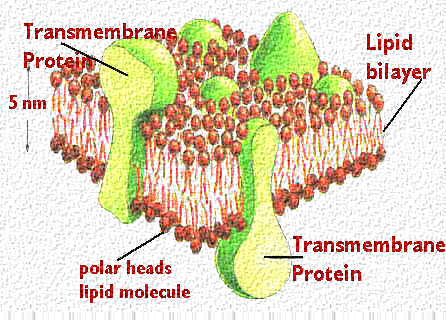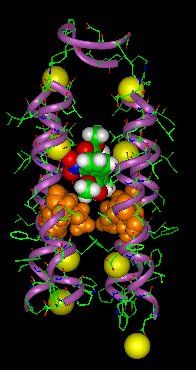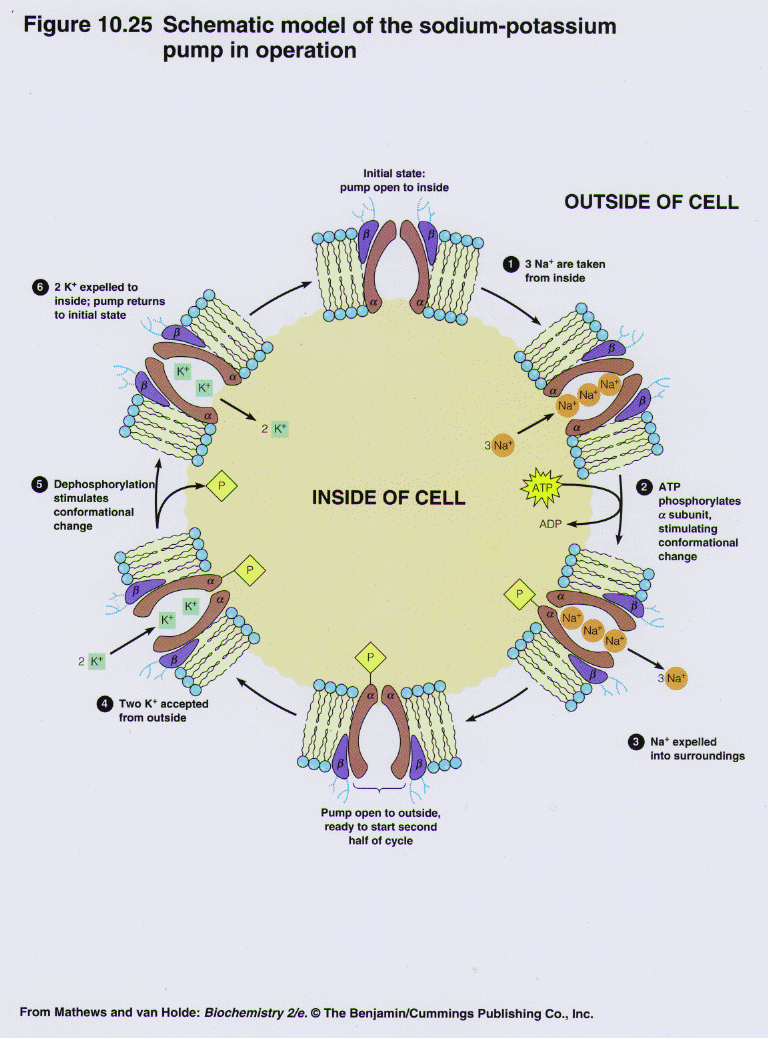
Figure 1
| MadSci Network: Biochemistry |
The boundaries of animal cells are formed by the plasma membrane, also known as the lipid bilayer (figure 1).

The lipid bilayer is asymmetric so the outer part of the bilayer has different components (proteins, lipids, etc...) than the inner part of the bilayer. Since the lipid bilayer acts as a barrier and keeps certain molecules inside the cell and other molecules out of the cell, there must be a mechanism to get molecules into and out of the cell. The lipid bilayer does allow hydrophobic molecules such as oxygen, carbon dioxide and nitrogen to diffuse across the bilayer because the internal part of the lipid bilayer is hydrophobic. Small uncharged polar molecules, such as water, urea and glycerol, are also able to diffuse across the lipid bilayer. However, ions and large uncharged polar molecules are not able to freely diffuse across the lipid bilayer into or out of the cell; the transport of these types of molecules requires carrier proteins and channel proteins which may be active or passive. Channel proteins allow solutes to cross the bilayer passively, a process called passive transport which requires no input of energy. The direction and the driving force of solutes through a channel protein is mediated by either the solutes concentration gradient or its electrochemical gradient. An example of a channel protein (figure 2) is an ion channel, a transmembrane protein which allows the passage of an ion, such as calcium, across the lipid bilayer.

Carrier proteins are also transmembrane proteins which function by the process of active transport as well as passive transport. Active transport is the transport of a solute against its electrochemical gradient and this process requires energy, usually in the form of ATP. An example of a carrier protein (figure 3) and active transport is the sodium-potassium ATPase. Three molecules of sodium are pumped out of the cell against its concentration gradient and 2 molecules of potassium are pumped into the cell against its concentration gradient.

Try the links in the MadSci Library for more information on Biochemistry.